the underground “ethnography museum” expands a park in budapest
a curved volume emerges from budapest park
Napur Architects unveils its new Museum of Ethnography, which rises among the historic streets of Budapest. As part of the Liget Budapest Project (see here), the largest urban and cultural development in Europe, the work is defined by its curved gesture, in the continuity of the park that surrounds it. With its landscape roof and a dramatic profile — both dynamic and simple — the volume harmonizes with the park environment and communicates with the urban context. Városliget City Park has long been a familiar place for Museum of Ethnography, the architects note that his collection made its debut at this site during the Millennium Exhibition of 1896.
pictures © Gyorgy Palko | @gyorgypalko
underground architecture in the city
The Ethnography Museum by Napur Architects is the result of a winning entry selected above designs from renowned international firms including Zaha Hadid Architects and BIG. The Hungarian Architecture Workshop (see more here) chose to respect the context of the city by enshrining the majority of the exhibition space underground, rather than disrupting the historic urban fabric.
The architects state: “Sixty percent of the structure is below ground level, and thanks to the landscaped roof and the transparency of the sections on the ground, the new museum is also adapted to its environment in its scale. The grass-covered roof will be a pleasant community space awaiting visitors to Városliget.’
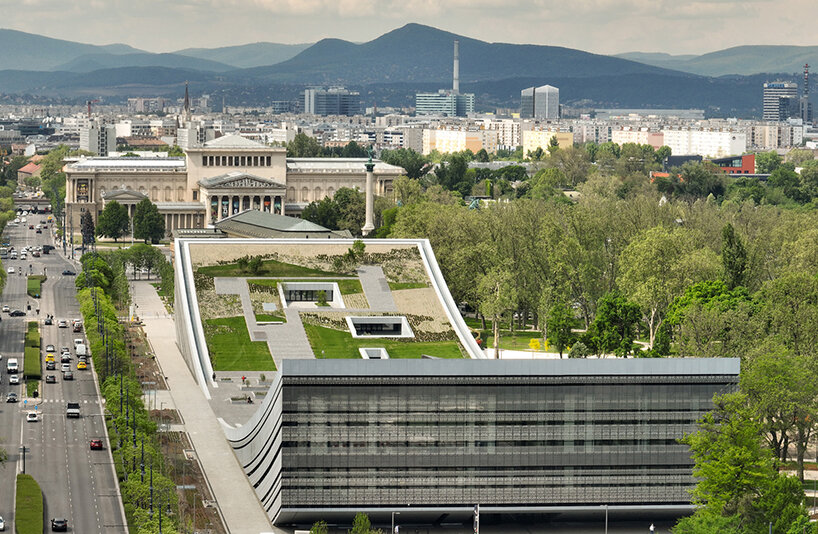
the pixelated facade
The hallmark of the Budapest Museum is its glass curtain wall that envelops the landscaped rooftop garden. While this element suggests a pair of intertwining natural hillsides, its detailed facade is entirely contemporary – composed of almost half a million pixels, a weft made by a metal grid based on ethnographic motifs selected from Hungarian and international collections. of the museum. The pixels were inserted into a laser-cut aluminum grid by a special robot, more than 2,000 of which are attached to the building. The small cubes were composed of 20 contemporary Hungarian and 20 international reinterpretations of ethnographic motifs.
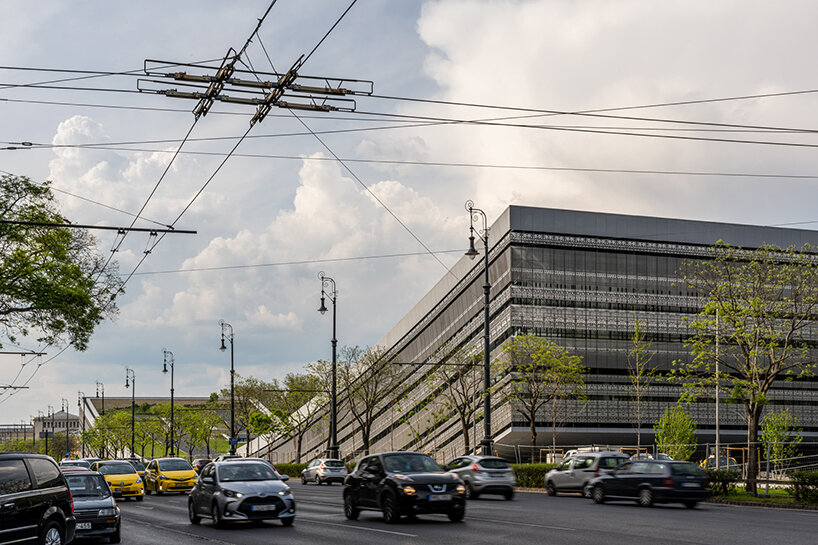
inside the Ethnography Museum
The new functions and flexible spaces of the modern, state-of-the-art museum building will facilitate understanding of the historical heritage embodied by the collection as well as the different aspects of contemporary society. In addition to the transmission of this historical heritage, the concretization of more recent themes and professional and research perspectives continues to be among the priority objectives of the museum, as confirmed by its mission.
The architects comment: “The creatively constructed spaces will open up new opportunities for communication with visitors, allowing everyday objects, phenomena and ideas of the past and present to be presented side by side.”
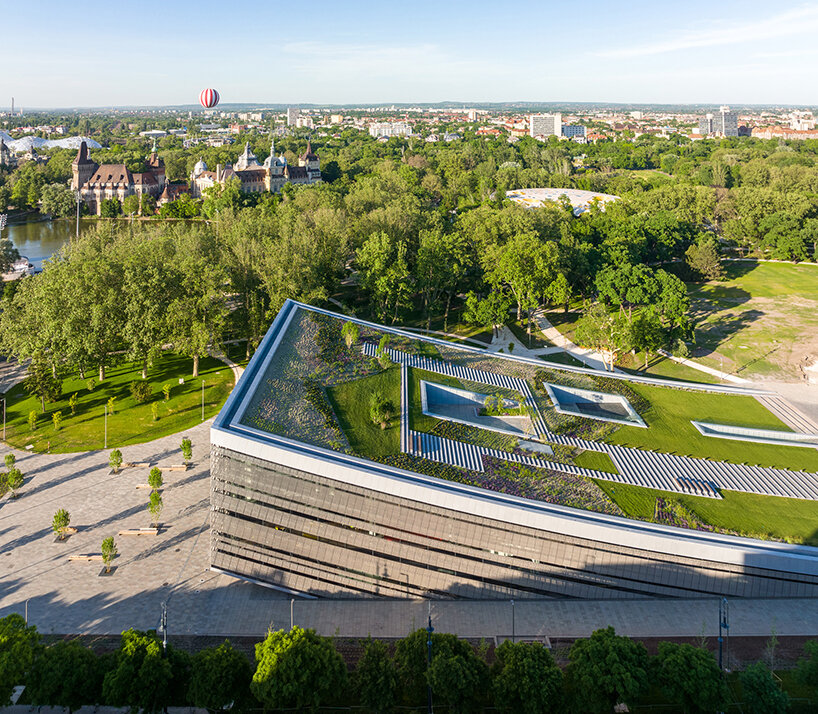
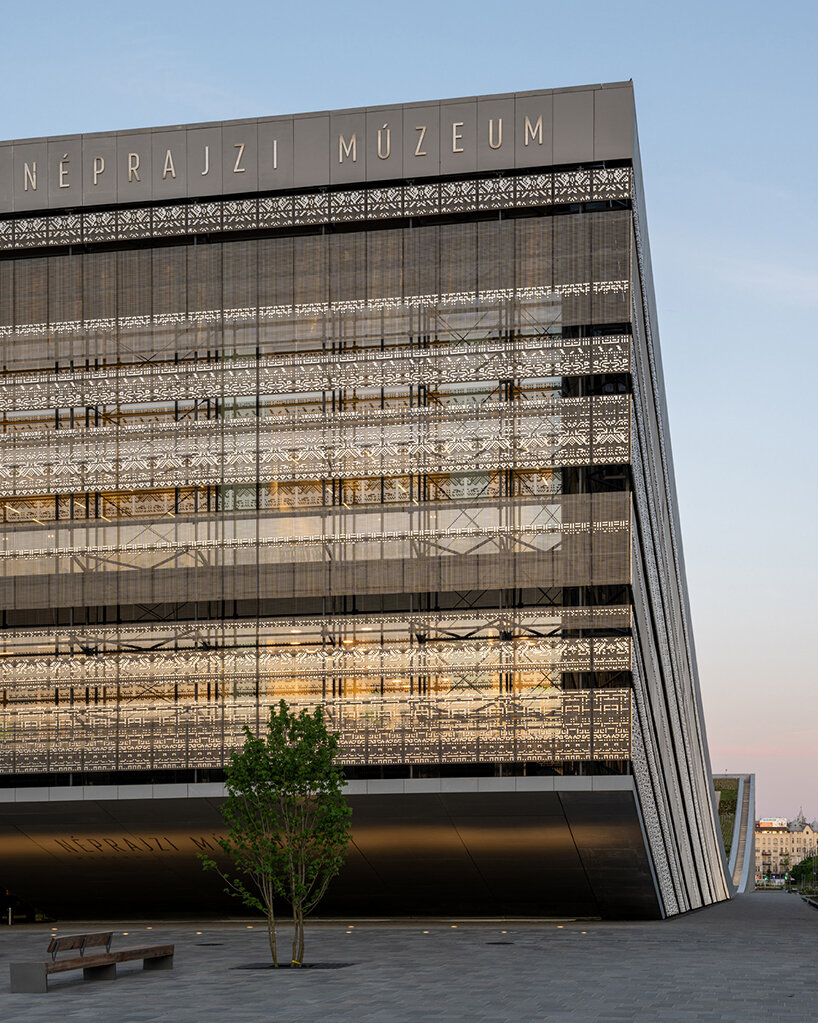

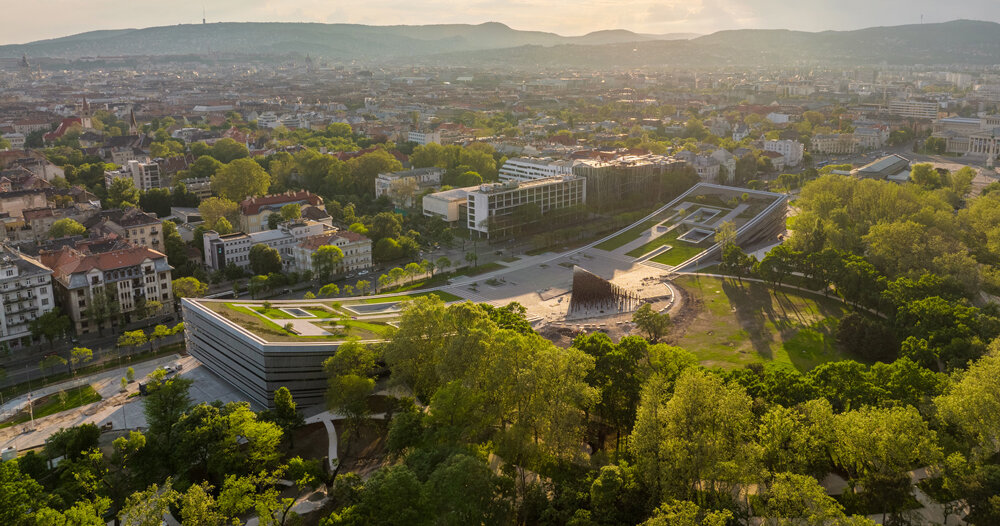
Comments are closed.